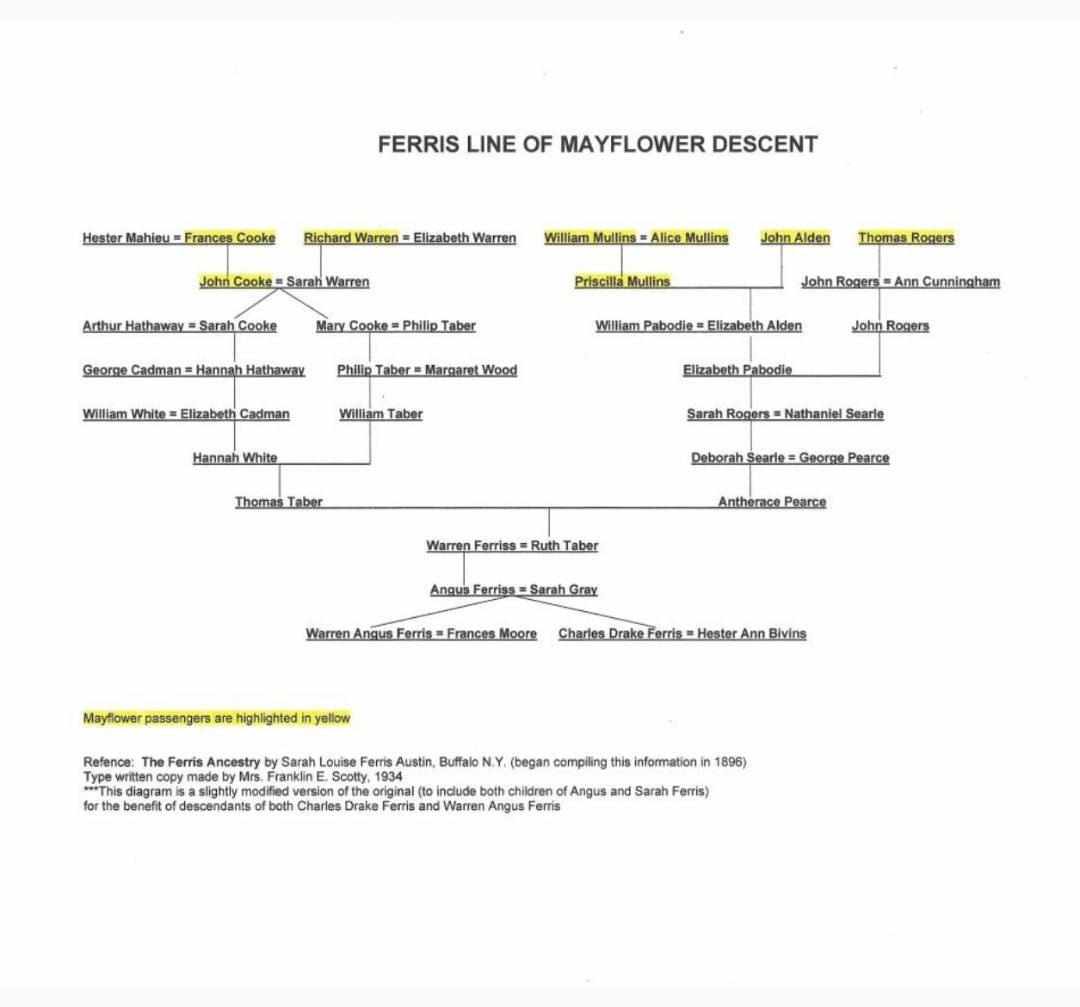FERRIS: Those of this name derive from Henri de Ferrers- a great Norman-English lord – who came from Ferriere de St. Hilaire in Normandy. He took part in the Conquest of England by William of Normandy in the year 1066-his rank in the army was Master of the Horse. His arms bore six horseshoes-argent-on a field sable.
This is the introduction to the book entitled “The Ferris Ancestry”, which was compiled by Sarah Louise Ferris Austin around 1896. The book was later type written in 1934 by Mrs. Franklin E. Scotty. Sarah Louise Ferris was a resident of Buffalo for almost nine decades. She was born in March of 1850 and died in August 1938. She was the daughter of Charles Drake Ferris (brother to Warren Angus Ferris) and Hester Ann (Bivens) Ferris. Her father had dreamed of taking his mother, wife, and children to join his brother in Texas, but was never able to break free of financial difficulties in Buffalo. In 1849, he boarded a ship that is believed, but not proven, to have been lost at sea near Nova Scotia. Sarah Louise was born shortly after his departure, so she never met her father. Perhaps this is why she had such deep curiosity and passion for researching her family’s ancestry. She was a lifelong member of the Daughters of the American Revolution and the Society of Mayflower Descendants of New York. She shared her father’s love of writing and served as the managing editor of the Buffalo Commercial. Although she left no surviving children, she did leave a labor of love in the research and documentation she prepared for future generations. Her book is considered by scholars as culturally important and is available through Google Books, Amazon, Barnes & Noble, etc.
Within the book, the author meticulously outlines the Ferris line of Mayflower descent revealing that Warren Angus Ferris (WAF) and Charles Drake Ferris (CDF) are direct descendants of eight Mayflower passengers. This is fascinating and enlightening information for descendants of the Ferris brothers. Please refer to a reproduction of the diagram she prepared. Mayflower passengers are highlighted in yellow and include Frances Cooke, John Cooke, Richard Warren, William Mullins, Alice Mullins, Priscilla Mullins, John Alden, and Thomas Rogers. One could speculate that the Warren line was the inspiration for Warren Ferris’ and Warren Angus Ferris’ given name. The book is full of personal information and history of these ancestors and is definitely worth reading if you’re interested in the Ferris line. Thanks to Sarah Louise (Ferris) Austin’s tenacity, this work is preserved and available to the descendants and the public.
Blog written by Christine Cohen. Great granddaughter (X3) of Warren Angus Ferris. Great granddaughter (X2) of Henry Ferris.
Descendants of those buried in the Warren Ferris Cemetery and anyone interested in sharing historical information about the cemetery are encouraged to write with stories, additions, and corrections. Please contact me at greyhairfarm@yahoo.com



